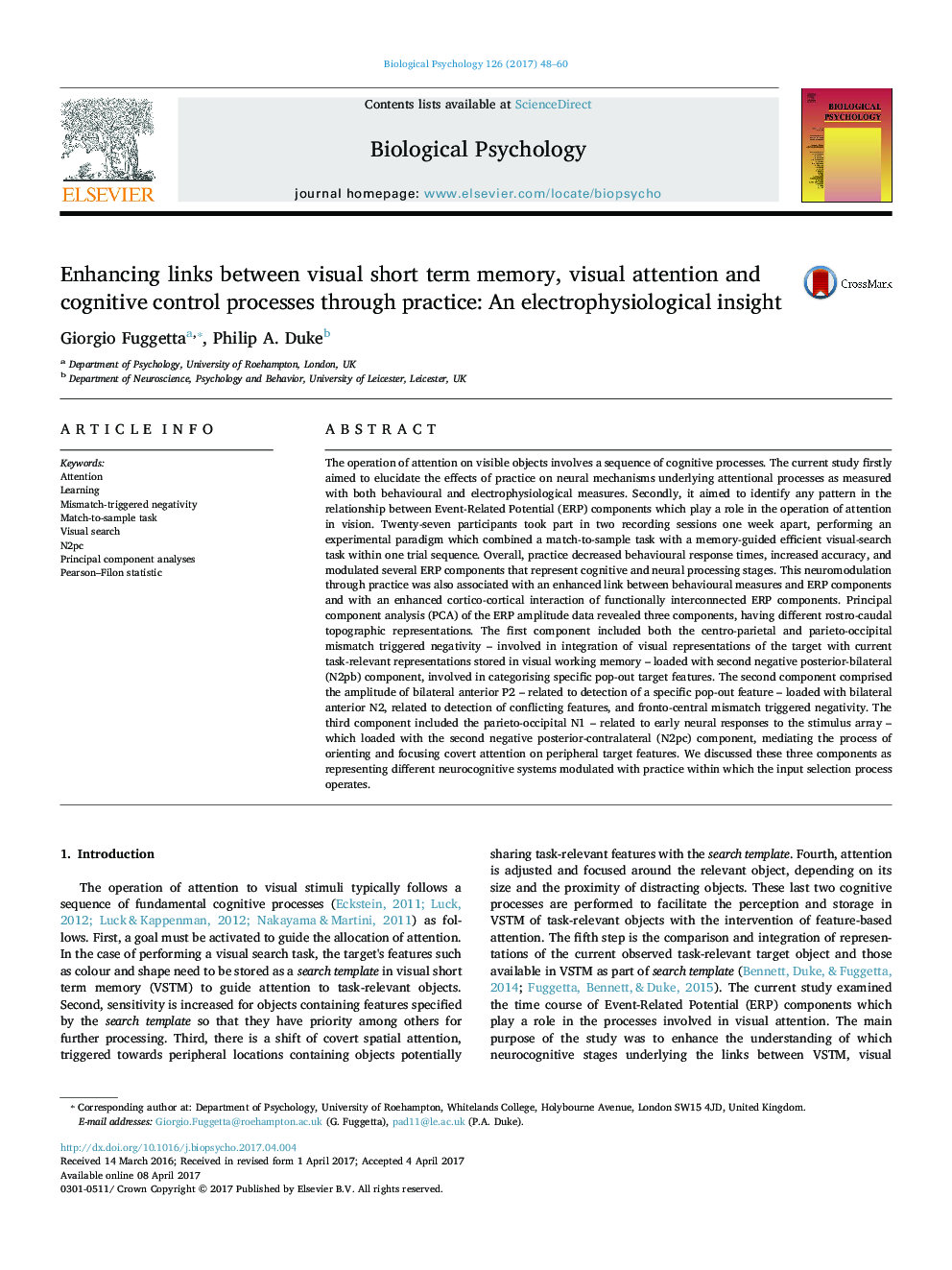| کد مقاله | کد نشریه | سال انتشار | مقاله انگلیسی | نسخه تمام متن |
|---|---|---|---|---|
| 5040424 | 1473848 | 2017 | 13 صفحه PDF | دانلود رایگان |
- Enhanced understanding of visual neural mechanisms underlying practice.
- Practice-induced changes in neural mechanisms underlie learning.
- Improvement of neurocognitive stages involved in the operation of visual attention.
- Combination of series of paradigms leads to an enhancement neural responses.
The operation of attention on visible objects involves a sequence of cognitive processes. The current study firstly aimed to elucidate the effects of practice on neural mechanisms underlying attentional processes as measured with both behavioural and electrophysiological measures. Secondly, it aimed to identify any pattern in the relationship between Event-Related Potential (ERP) components which play a role in the operation of attention in vision. Twenty-seven participants took part in two recording sessions one week apart, performing an experimental paradigm which combined a match-to-sample task with a memory-guided efficient visual-search task within one trial sequence. Overall, practice decreased behavioural response times, increased accuracy, and modulated several ERP components that represent cognitive and neural processing stages. This neuromodulation through practice was also associated with an enhanced link between behavioural measures and ERP components and with an enhanced cortico-cortical interaction of functionally interconnected ERP components. Principal component analysis (PCA) of the ERP amplitude data revealed three components, having different rostro-caudal topographic representations. The first component included both the centro-parietal and parieto-occipital mismatch triggered negativity - involved in integration of visual representations of the target with current task-relevant representations stored in visual working memory - loaded with second negative posterior-bilateral (N2pb) component, involved in categorising specific pop-out target features. The second component comprised the amplitude of bilateral anterior P2 - related to detection of a specific pop-out feature - loaded with bilateral anterior N2, related to detection of conflicting features, and fronto-central mismatch triggered negativity. The third component included the parieto-occipital N1 - related to early neural responses to the stimulus array - which loaded with the second negative posterior-contralateral (N2pc) component, mediating the process of orienting and focusing covert attention on peripheral target features. We discussed these three components as representing different neurocognitive systems modulated with practice within which the input selection process operates.
210
Journal: Biological Psychology - Volume 126, May 2017, Pages 48-60
